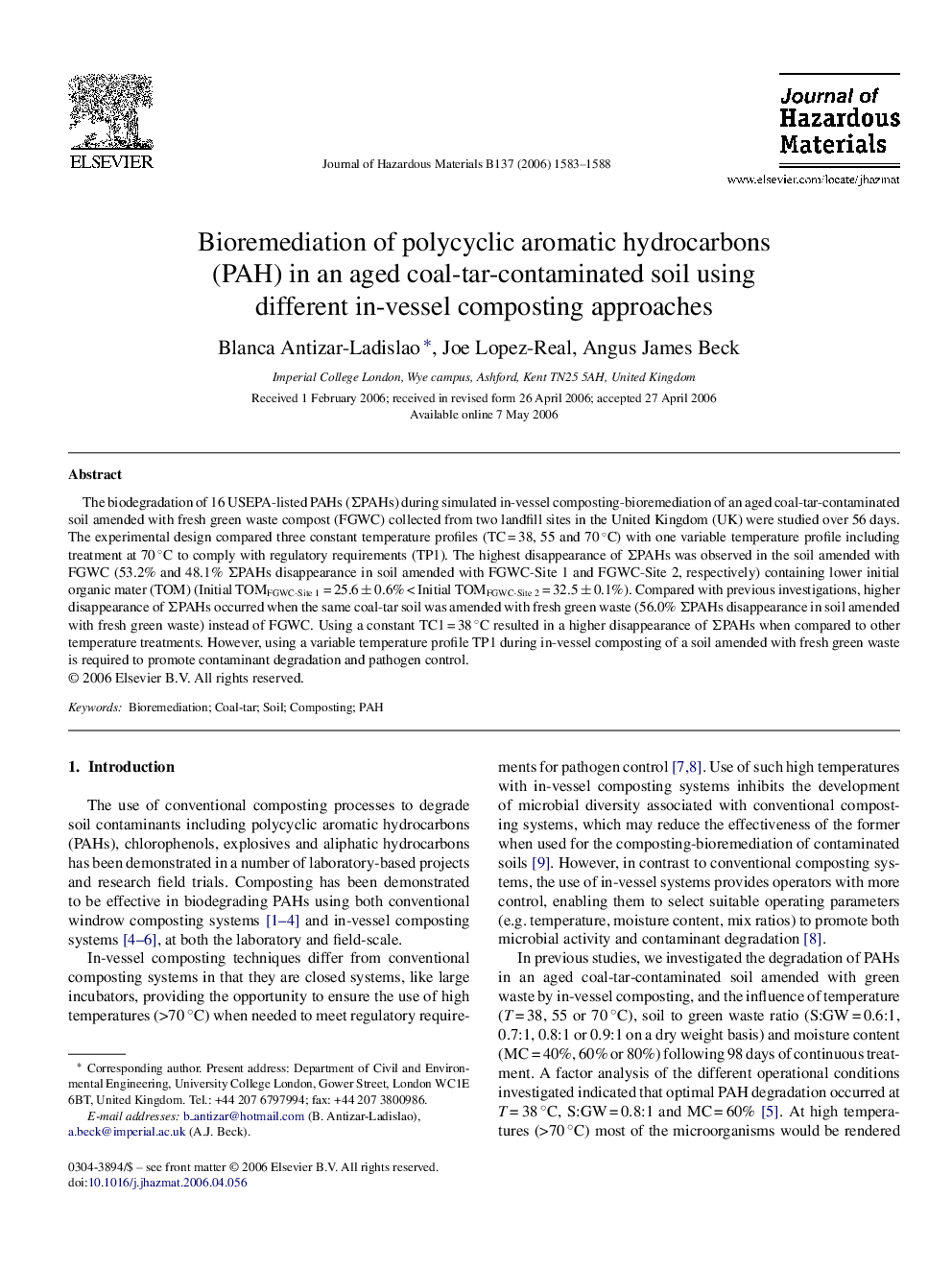| Article ID | Journal | Published Year | Pages | File Type |
|---|---|---|---|---|
| 585123 | Journal of Hazardous Materials | 2006 | 6 Pages |
Abstract
The biodegradation of 16 USEPA-listed PAHs (ΣPAHs) during simulated in-vessel composting-bioremediation of an aged coal-tar-contaminated soil amended with fresh green waste compost (FGWC) collected from two landfill sites in the United Kingdom (UK) were studied over 56 days. The experimental design compared three constant temperature profiles (TC = 38, 55 and 70 °C) with one variable temperature profile including treatment at 70 °C to comply with regulatory requirements (TP1). The highest disappearance of ΣPAHs was observed in the soil amended with FGWC (53.2% and 48.1% ΣPAHs disappearance in soil amended with FGWC-Site 1 and FGWC-Site 2, respectively) containing lower initial organic mater (TOM) (Initial TOMFGWC-Site 1 = 25.6 ± 0.6% < Initial TOMFGWC-Site 2 = 32.5 ± 0.1%). Compared with previous investigations, higher disappearance of ΣPAHs occurred when the same coal-tar soil was amended with fresh green waste (56.0% ΣPAHs disappearance in soil amended with fresh green waste) instead of FGWC. Using a constant TC1 = 38 °C resulted in a higher disappearance of ΣPAHs when compared to other temperature treatments. However, using a variable temperature profile TP1 during in-vessel composting of a soil amended with fresh green waste is required to promote contaminant degradation and pathogen control.
Related Topics
Physical Sciences and Engineering
Chemical Engineering
Chemical Health and Safety
Authors
Blanca Antizar-Ladislao, Joe Lopez-Real, Angus James Beck,
